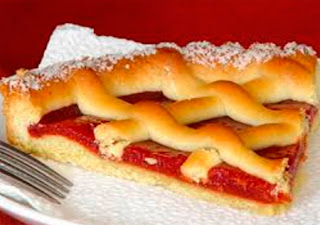goals
* You can use the techniques to stretch with rolling pin and put into molds
* Use baking blind properly, as required by the recipe
Sablée mass, Brisée, Sucrée
There are three types of mass, differences as he or ingredients that compose it. The secret of good mass work quickly and carefully, with cold and better ingredients if not hot.
pate Sablée
This mass is applied to various recipes and different shapes.
I will explain that case and how we will apply.
* Pate Sablée, its name evokes its texture. It melts on the tongue, it is crisp and tender at once. It is used to make cookies or pastries, in tarts and pies funds. Its varieties are ideal for making dry pastries, cut with cutting of different shapes and decorates them with chocolate or icing.
* Pate Sablée 1: It is very delicate. Tartaletitas should not use it for, or for moist fillings. Yes to alfajores or simple cakes.
* Pate Sablée 2: It is suitable for sweet cakes with fruit fillings.
* Pate Sablée 3: widely used for tarts and pastries. egg is added to make the dough firmer.
The recipe
Ingredients:
In frencés it called Pate Brisée and is used for puddings, pies, quiches and pies.
It is also appropriate to tarteletas and for decorative touches. If you add sugar is called Pate Sucrée.
* Pate Brisée: Ideal for feet or very sweet fruit fillings. It is stronger than the mass Sablée, but does not have its sandy texture.
* Pate Brisée Sucrée 1: derived from the brisée pate but with added sugar. It is most suitable for clafoutis, creams made from milk and eggs, with aggregates of different fruits, very popular and classic in France.
 Even they kneaded thin, wet withstand very well filled.
Even they kneaded thin, wet withstand very well filled.
* You can use the techniques to stretch with rolling pin and put into molds
* Use baking blind properly, as required by the recipe
Sablée mass, Brisée, Sucrée
There are three types of mass, differences as he or ingredients that compose it. The secret of good mass work quickly and carefully, with cold and better ingredients if not hot.
pate Sablée
This mass is applied to various recipes and different shapes.
I will explain that case and how we will apply.
* Pate Sablée, its name evokes its texture. It melts on the tongue, it is crisp and tender at once. It is used to make cookies or pastries, in tarts and pies funds. Its varieties are ideal for making dry pastries, cut with cutting of different shapes and decorates them with chocolate or icing.
* Pate Sablée 1: It is very delicate. Tartaletitas should not use it for, or for moist fillings. Yes to alfajores or simple cakes.
* Pate Sablée 2: It is suitable for sweet cakes with fruit fillings.
* Pate Sablée 3: widely used for tarts and pastries. egg is added to make the dough firmer.
The recipe
Ingredients:
- 300g flour 0000
- 200g butter
- 100g caster sugar
- 1 egg
- Vanilla extract (optional)
- Lemon zest (optional)
General tips: Given these details is ensured the success of this mass.
1) Keep your hands thoroughly cold.
2) If the dough softens, place in the refrigerator to harden again
3) Knead the dough with the fingertips, form a homogeneous mass without lumps, but not work it too.
4) Use icing sugar.
5) The dough should be stored in the refrigerator before using always covered with film or foil.
6) No need enmantecar molds because they are masses having lots of butter.
7) Bake in hot oven at 200-230 ° C to achieve a crisp and golden mass.
Pasta streams have a slightly crunchy brittle texture.
To amalgamate the paste a small amount of water or liquid which separates is used.
This gives some crunchy texture also acquires when baked at a high temperature.
Work in a cool atmosphere and cold ingredients.
Handle the dough as little as possible. If the works too hard get some results and also heavy.
It is the simplest and most versatile of all.
In frencés it called Pate Brisée and is used for puddings, pies, quiches and pies.
It is also appropriate to tarteletas and for decorative touches. If you add sugar is called Pate Sucrée.
* Pate Brisée: Ideal for feet or very sweet fruit fillings. It is stronger than the mass Sablée, but does not have its sandy texture.
* Pate Brisée Sucrée 1: derived from the brisée pate but with added sugar. It is most suitable for clafoutis, creams made from milk and eggs, with aggregates of different fruits, very popular and classic in France.
 Even they kneaded thin, wet withstand very well filled.
Even they kneaded thin, wet withstand very well filled.
Mixing methods
Whether you do by hand or with a machine there are techniques and ways of working that facilitate ideally blend together and knead not glutem not want the flour to develop.
Work on a cold marble surface, place the flour mounded and drill a hole in the center.
Chop the butter and put it in the hole with eggs and sugar.
Incorporate these ingredients to the flour, kneading with dedos.Esta technique is useful for masses having a high content of butter over the flour.
An electric machine is ideal to mix butter with flour, but without overworking the dough because too soft and difficult to handle.
You can also use a wire pasta mixer to incorporate the butter to the mixer harina.El consists of a resistant metal wires attached to a handle.





No hay comentarios:
Publicar un comentario